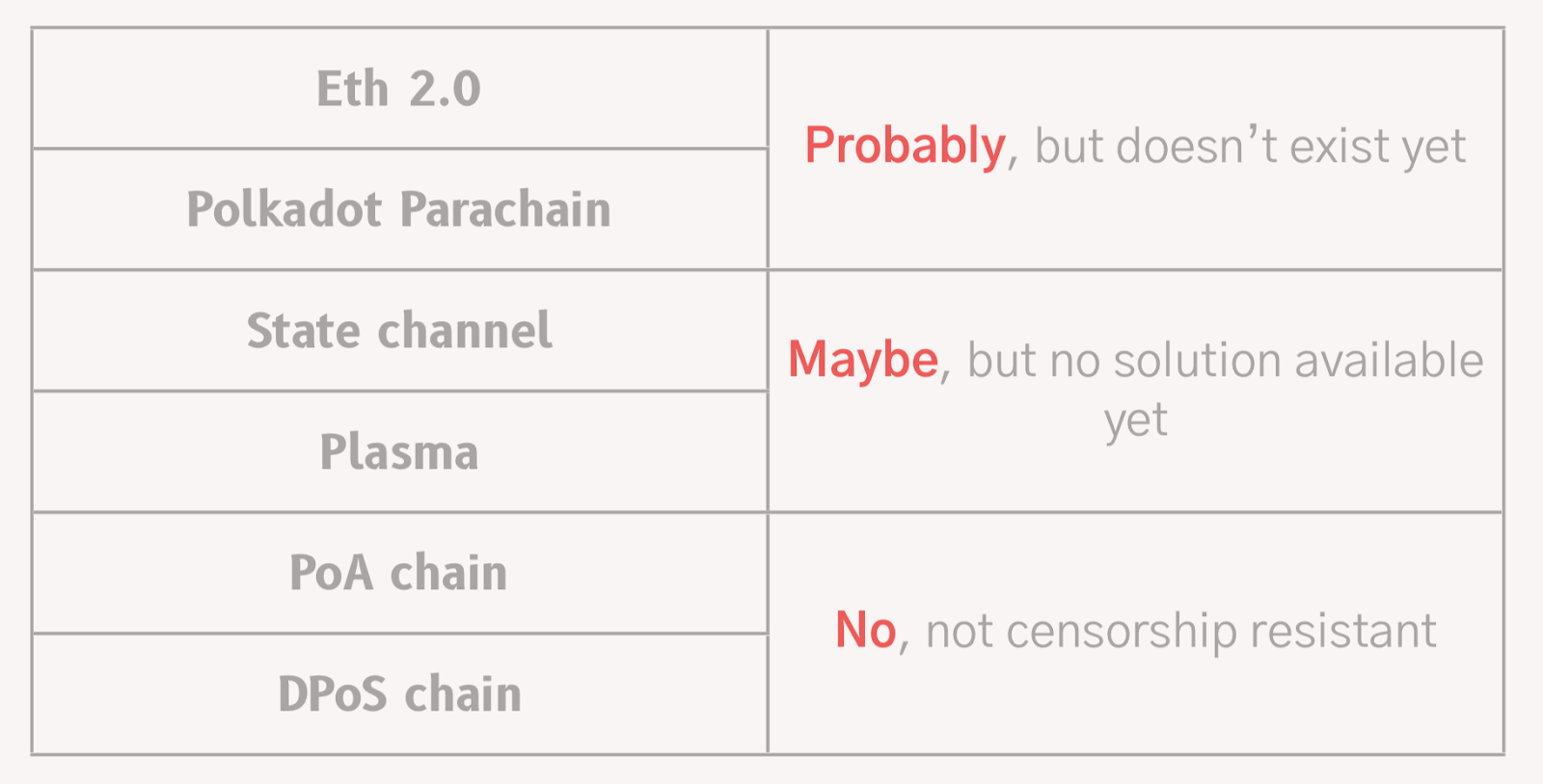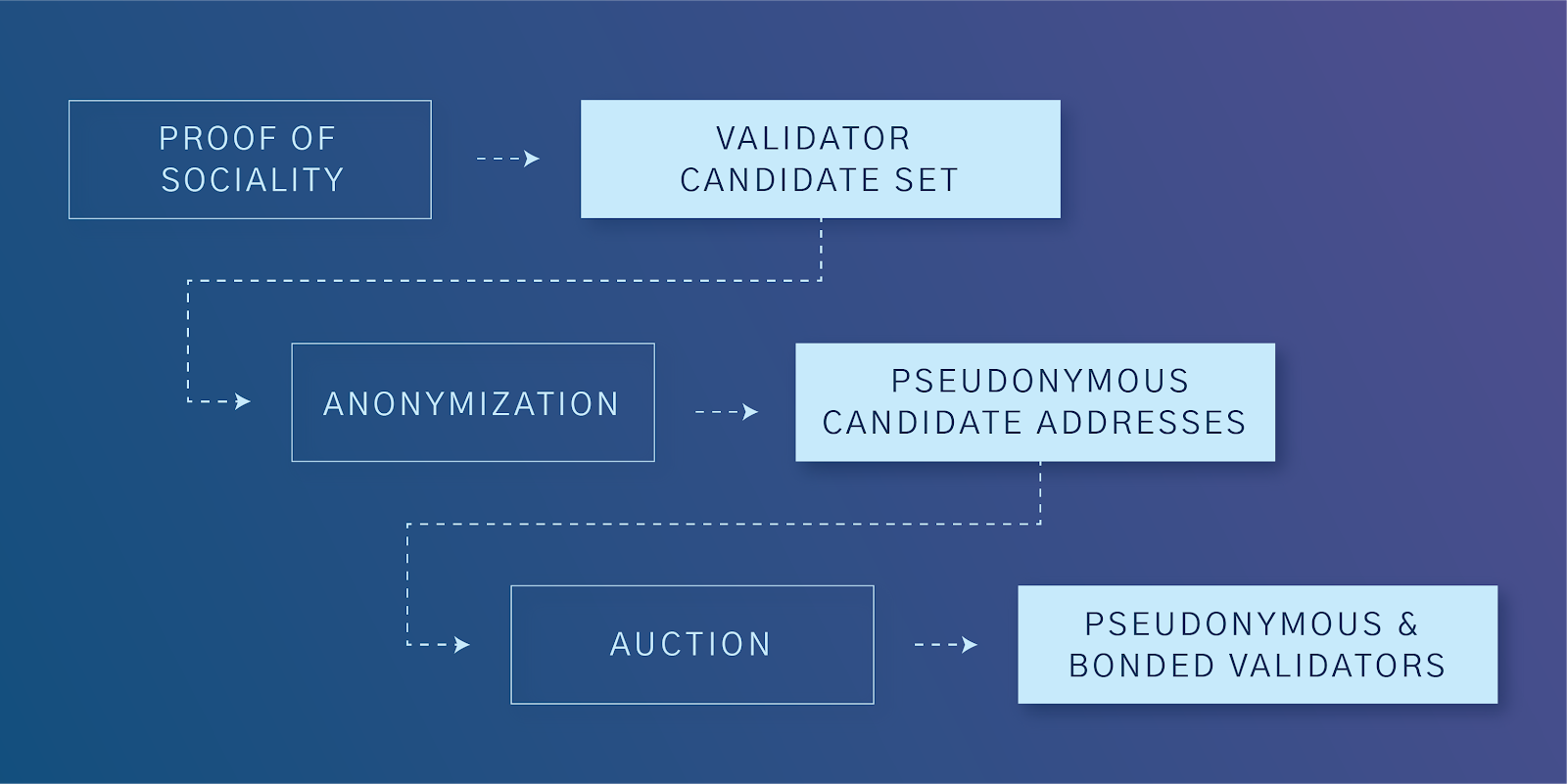TL;DR: The Trustlines Network is planned to be hosted on a dedicated minimal viable Proof-of-Stake sidechain to Ethereum, the Trustlines Blockchain. The Trustlines Blockchain is targeted to be launched in Q2/2019.
The Requirements
Initially, it was planned to run the Trustlines Network on top of Ethereum. As popularity of the Ethereum chain grew, we observed that gas cost and congestion issues of Ethereum render those use cases of the Trustlines Network which aim to transfer small amounts of value unviable. We defined the following requirements for a blockchain layer:
- Should have capacity for up to 10M Trustlines Transfers per day
- Transaction cost should ideally be < €0.01
- Must be censorship resistant (i.e. unstoppable)
- Must feature the EVM
- Must be available in Q2/19
Evaluated Alternative Options
There have been various scaling option that we considered, unfortunately they all either have not been ready to use or failed to meet our censorship resistance requirement.

Especially PoA and DPoS systems seemed to be interesting options, as they feature an EVM and are ready to use. The main problem we’ve seen with these is, that as all validators are publicly known it’s probably way too easy to shut them down by simply threatening the validators.
Introducing the mPoS Trustlines Blockchain
After evaluating the options and not finding a fitting solution, we came up with our own sidechain design. The Trustlines Blockchain will be a minimal viable Proof-of-Stake (mPoS) sidechain to Ethereum, dedicated to Trustlines; a design which turned out to be…
- straightforward to implement
- reasonably secure for the Trustlines Network use cases
- working with anonymous validators, thus providing the required censorship resistance.
The system will be based on Parity’s Aura consensus algorithm, which was initially designed for Proof of Authority chains and comes with a first class client implementation (Parity).
The challenge was to enhance Aura with additional safety mechanisms allowing it to be run by anonymous validators. Therefore, a staking and slashing mechanism was introduced to combat equivocation risk. This fixes the “nothing at stake” issue of naive PoS systems. Hard-forking will be used as a pragmatic approach to initially manage the validator set as well as a defense mechanism of last resort. The Trustlines Blockchain is intended to specifically host DApps which are aligned with the Trustlines vision, i.e. applications which leverage mutual-trust relationships to organize the transfer of value.
The Validators
The Validator Candidate Set
Other than in Proof-of-Authority blockchains, in the planned mPoS system validators are anonymous. Introducing anonymous validators, however, creates the need to assure, that no entity can easily acquire 51% of the voting power. Popular chains like Ethereum 2.0 can achieve this by making buying 51% of the voting power prohibitively expensive. This is not what a new, unknown Blockchain can plan for. Therefore, at least for the first validation period (assumably 6 months) the validator candidate set will most likely be comprised of people we already got and will get to know in the real world, e.g. at meetups or conferences, thereby preventing multiple signups by the same person.
Anonymization
The validator candidate set consists of names and email addresses we collected. Using an anonymous survey service these will be converted to a set of Ethereum addresses that can not be linked to the real world identities.
The Validator Auction
Addresses in the above list will be eligible to participate in an auction on the Ethereum chain, which offers a limited number of validator slots (e.g. 128) to the highest bidders of ETH as stake. Consequently, those from the validator candidate set, which are willing to commit the most stake as a deposit will become the validators.
All validators should
- need to stake during the validation period
- need to deposit the same amount of ETH
- get only one voting right
- not be able to transfer their voting rights safely
- get their stake back after they are un-bonded (unless they cheated and their stake got slashed)

The Tokens (TLN > TLC)
Similar to the Ethereum chain, the Trustlines Blockchain requires transaction fees to be paid in a cryptocurrency native to the blockchain - these tokens will be called TLC.
In order to reach a broad set of early users and evangelists, a Merkle-Drop (non-spammy Airdrop) of TLN tokens is planned on the popular Ethereum chain.
TLN are ERC20 tokens which can be converted to TLC by sending them to a bridge contract.
Timeline
While the mPoS system is still under development, there is already a test chain running. At the time of writing, it is at block ~1,450,000.
The current plan is to conduct the Merkle-Drop and the validator auction mid to end of Q2/2019 and launch the Trustlines Blockchain shortly afterwards. Currently, everything seems to be on track, but as always, plans and timelines can be subject to change.
We’ll keep you updated and share additional posts giving more details about the Merkle-Drop, how to become a validator and the technology of the Trustlines Blockchain.
Considering that this will be the first minimal viable PoS derivative of Ethereum to go live, we are quite excited about the next steps. Importantly, we hope to convince and collect a sufficient number of validator candidates during the next weeks.
That said, if you are interested in becoming a validator on the current testnet please drop us a message on Twitter, same goes for all other questions and comments.
Vive la validation!
To stay up to date, make sure to follow us on Twitter!
